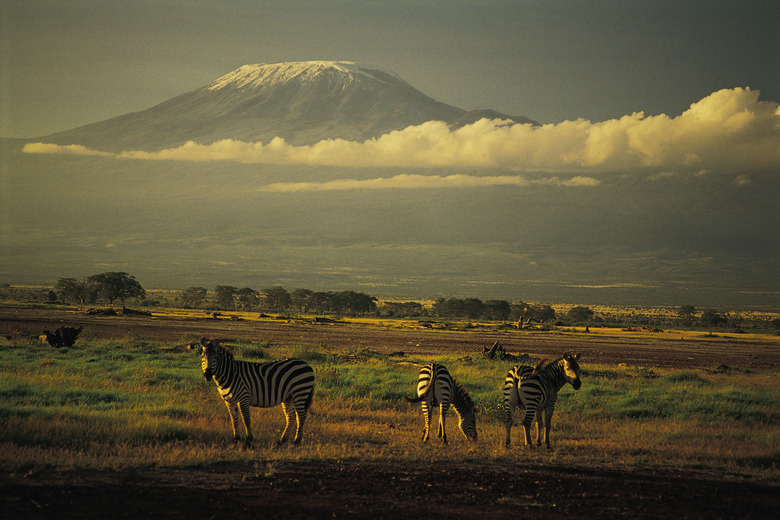What Kind Of Eruption Would You Expect At A Rift?
Volcanic eruptions, while typically thought of as being fierce, furious explosions, can range the spectrum from cataclysmic blasts to mild, relatively tame outflows of lava. Volcanic eruptions are generally associated with hot spots and plate boundaries, which are found at certain locations around the globe. Rifts, typically found along plate boundaries, feature volcanoes producing eruptions with a distinct set of characteristics.
The Facts on Rifts
The Facts on Rifts
A rift is an area where the Earth's crust is spreading apart. Driven by tectonic forces, the rifting process can, over time, ultimately lead to the emergence of new continents. Rifts are often narrow and possess steep sides. Most rifts — and their volcanoes — are part of mid-ocean ridges. However, occasionally, rifts can be located wholly within major land masses. These rare continental rifts may be associated with existing or developing plate boundaries, or they may be located away from any plate boundaries.
Fissure Eruptions
Fissure Eruptions
Although it is on rare occasion possible for other types of eruptions to occur, most often the type of volcanic eruption occurring at a rift is a fissure eruption. Fissure eruptions differ from many types of eruptions elsewhere — while most other eruptions entail volcanic material expelled from a centralized vent, fissure eruptions occur along a narrow line segment. In everyday terms, the general pattern of non-rift volcanoes can be compared to that of circular backyard swimming pools, whereas fissure volcanoes are more akin to lap pools. Fissure eruptions occur in the portions of the rift underlain by a particular kind of magma known as basaltic magma. The most common magma type in mid-ocean ridges, basaltic magma possesses a low viscosity, meaning that it is thin and runny.
Effusive Eruption Characteristics
Effusive Eruption Characteristics
Together, the characteristics of low viscosity and low gas content contribute to effusive eruptions. Effusive eruptions are the opposite of explosive eruptions. In an effusive eruption, lava pours out of the volcano relatively quietly and easily, in contrast to the violent bursts which often characterize other eruptions. The lava ejected during the effusive fissure eruptions associated with rifts typically doesn't attain great heights, with much of it simply pouring out of the sides of the fissure.
Geography and Examples
Geography and Examples
Because most rifts are part of mid-ocean ridges, most volcanic eruptions at rifts occur underwater. The mid-Atlantic ridge — a divergent plate boundary separating the plates on which Europe and Africa lie from the plates on which the Americas lie — is one of the Earth's primary locations for rift eruptions. The island nation of Iceland sits on the mid-Atlantic ridge, making it one of the few places in the world where rift eruptions on land can be observed on a regular basis. The largest lava flow in recorded history occurred as the result of a fissure eruption of an Icelandic volcano. Another major site of rift volcanoes is the East Pacific Rise, sometimes called just the Pacific Rise, an ocean ridge which runs roughly parallel to the western coast of South America. Rift eruptions also occur on land in portions of East Africa, where scientists suspect a divergent boundary is beginning to form. The world-famous Mount Kilimanjaro and Mount Kenya are part of this volcanic rift system.
Cite This Article
MLA
Harris, Amy. "What Kind Of Eruption Would You Expect At A Rift?" sciencing.com, https://www.sciencing.com/kind-eruption-would-expect-rift-12324362/. 24 April 2017.
APA
Harris, Amy. (2017, April 24). What Kind Of Eruption Would You Expect At A Rift?. sciencing.com. Retrieved from https://www.sciencing.com/kind-eruption-would-expect-rift-12324362/
Chicago
Harris, Amy. What Kind Of Eruption Would You Expect At A Rift? last modified March 24, 2022. https://www.sciencing.com/kind-eruption-would-expect-rift-12324362/
